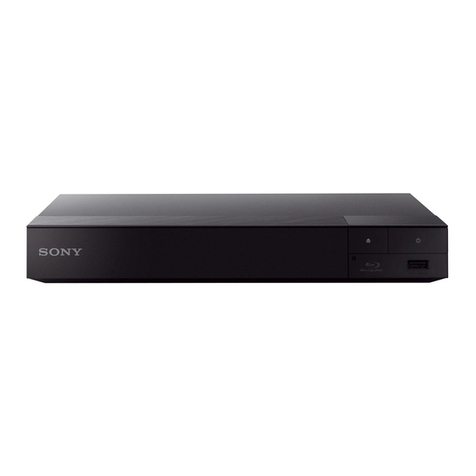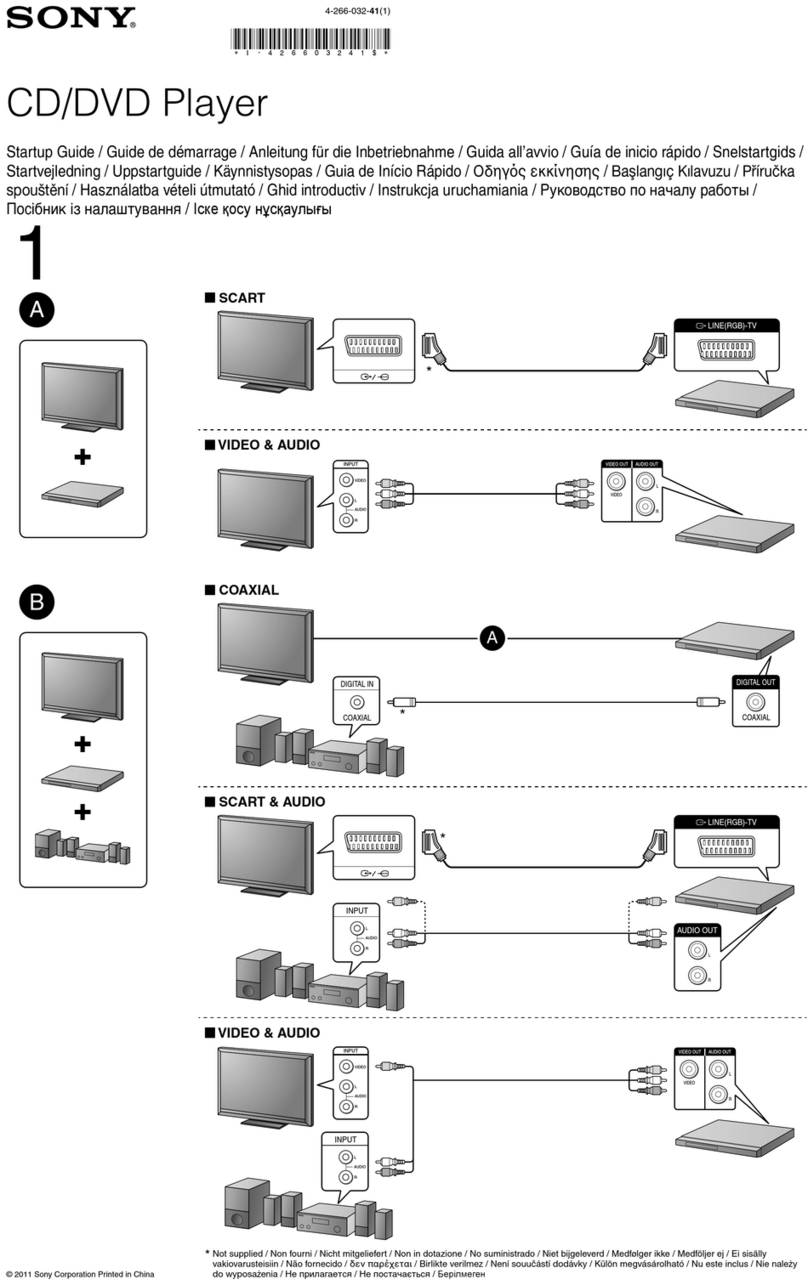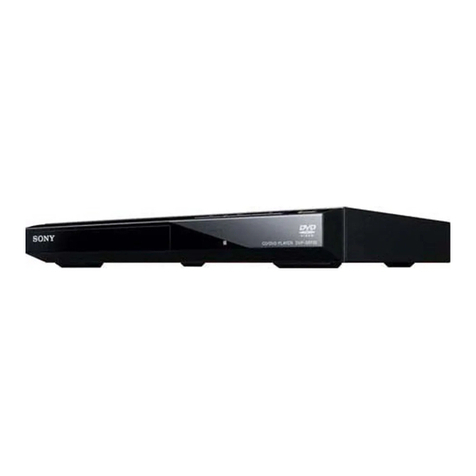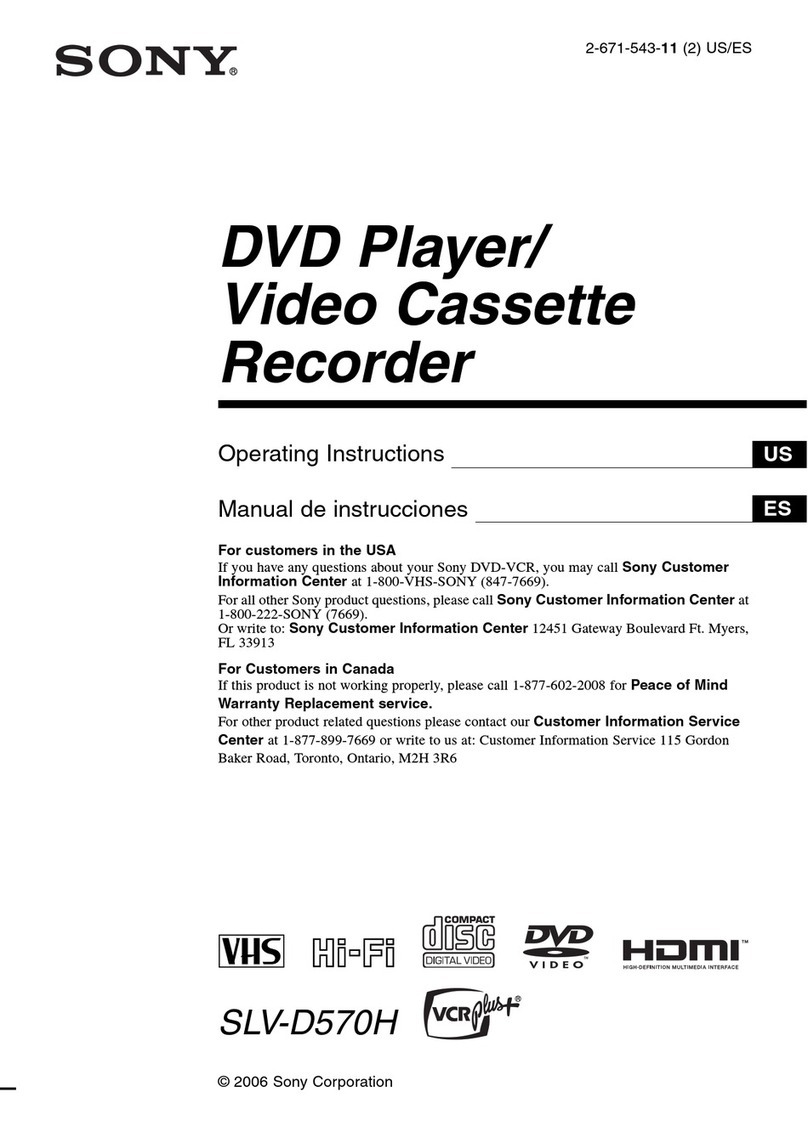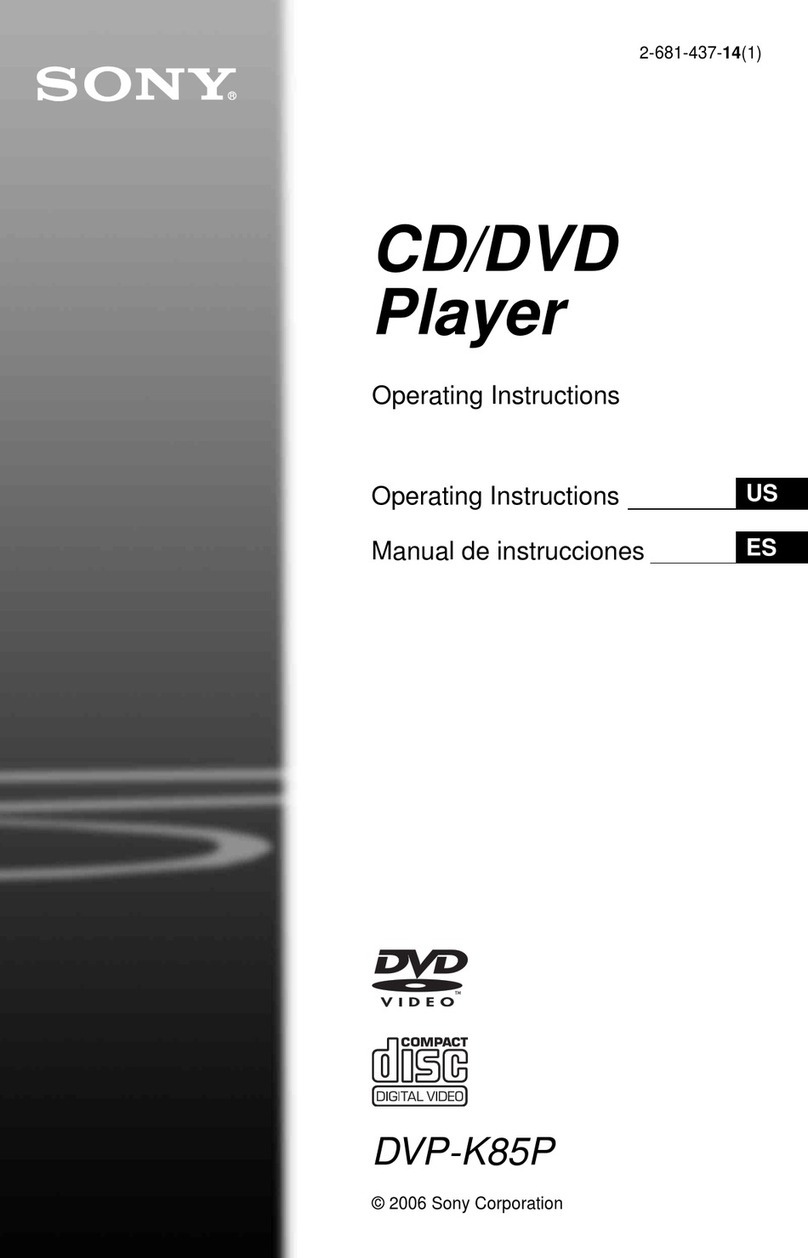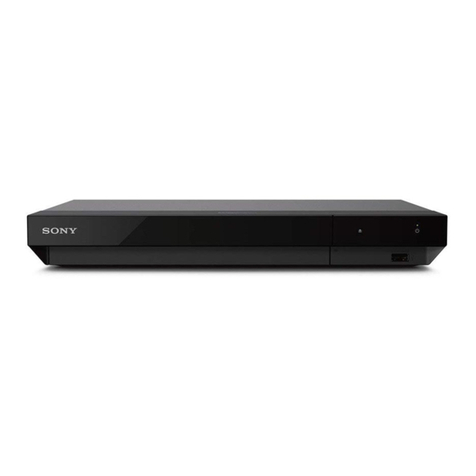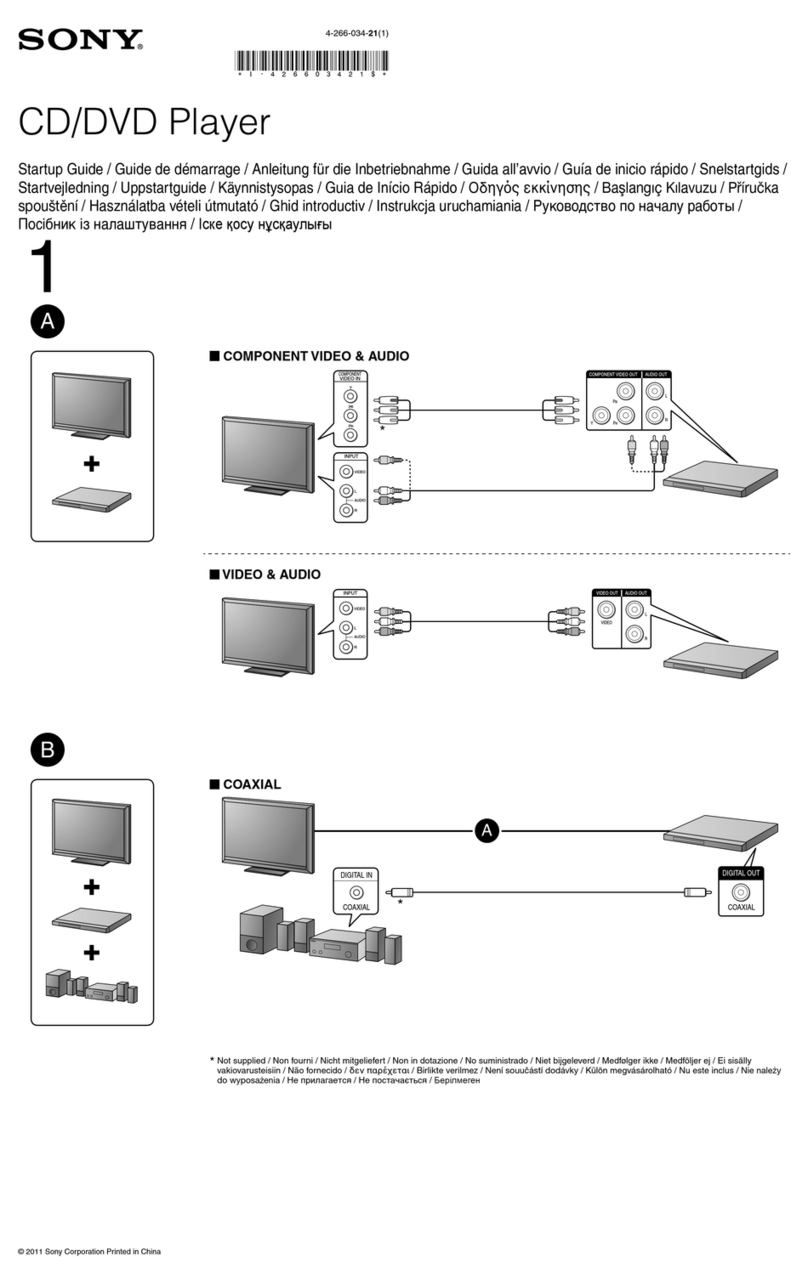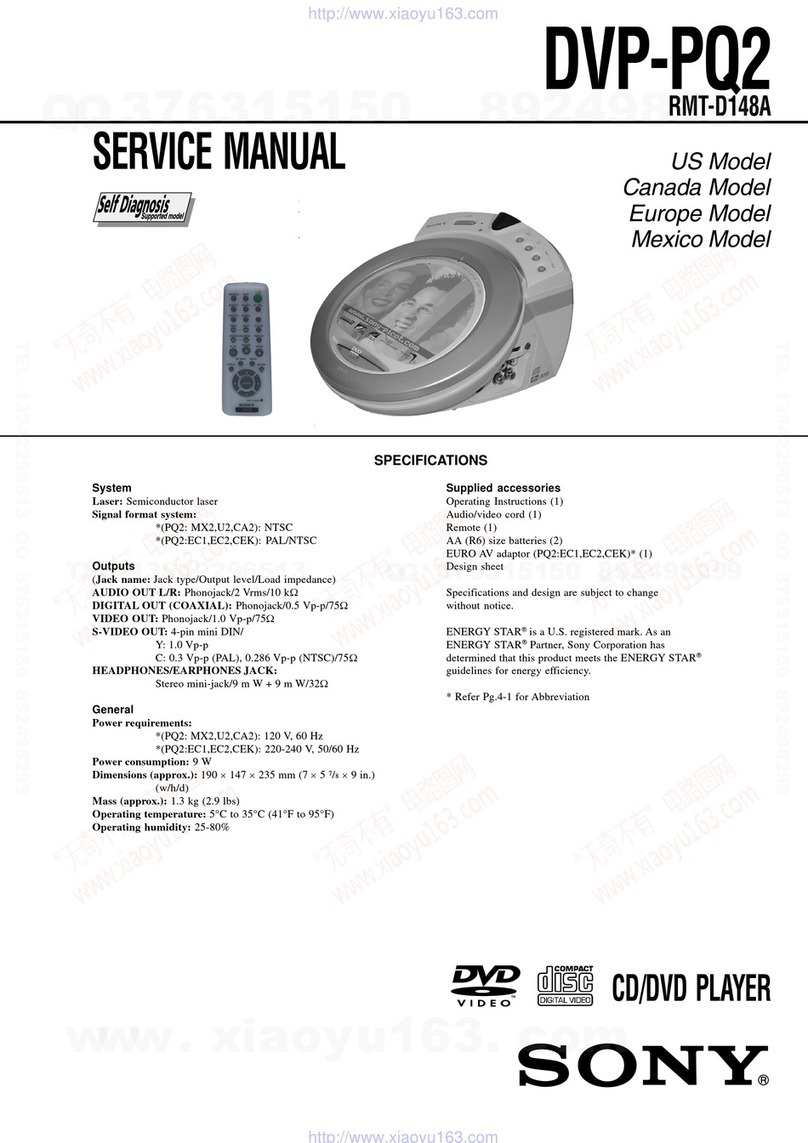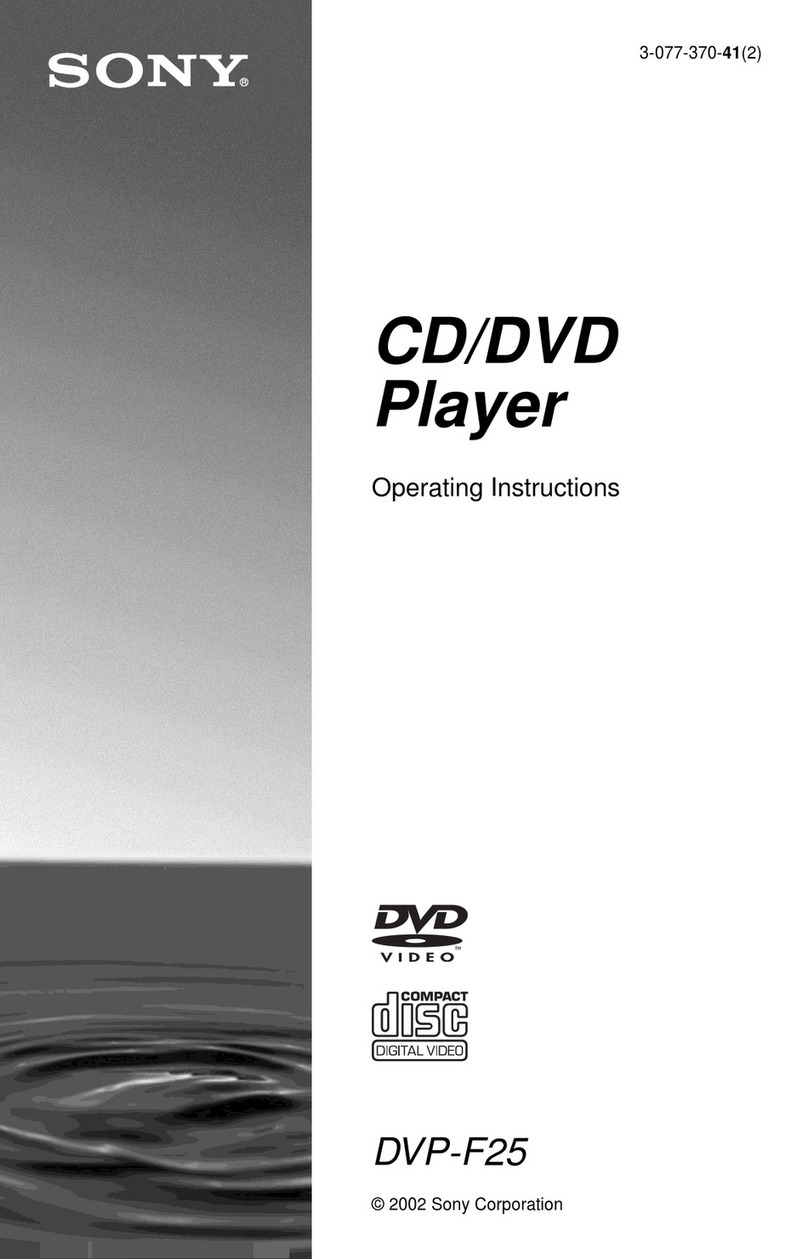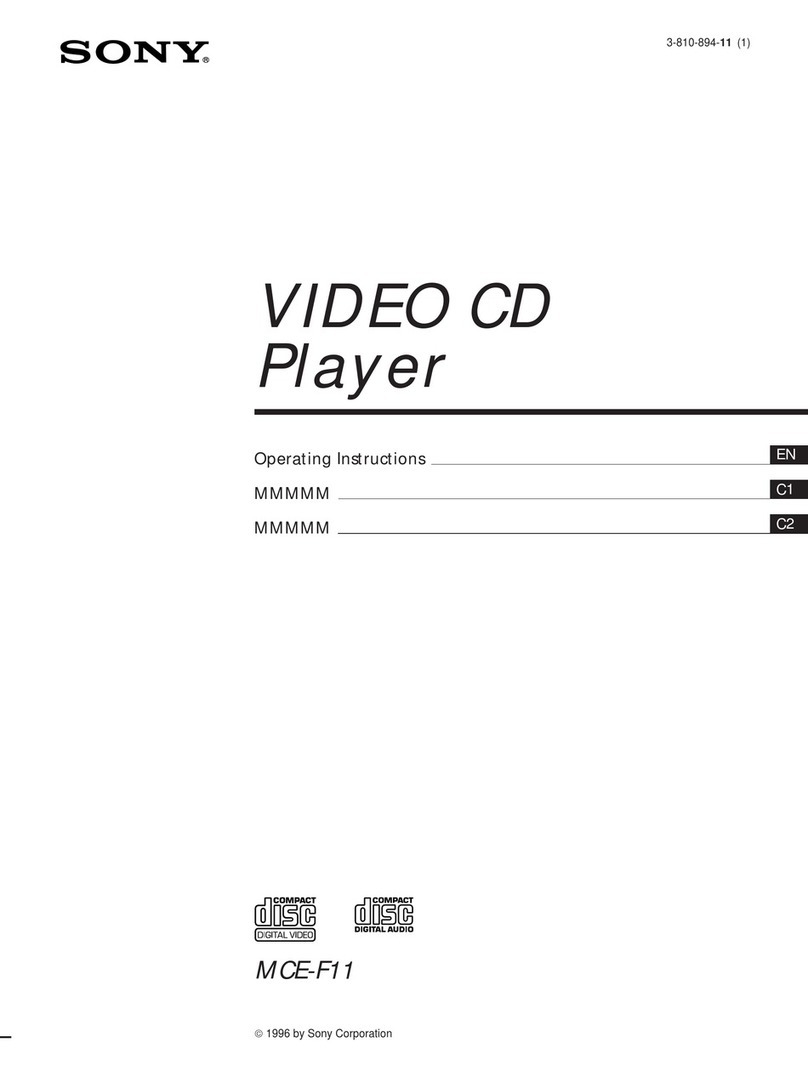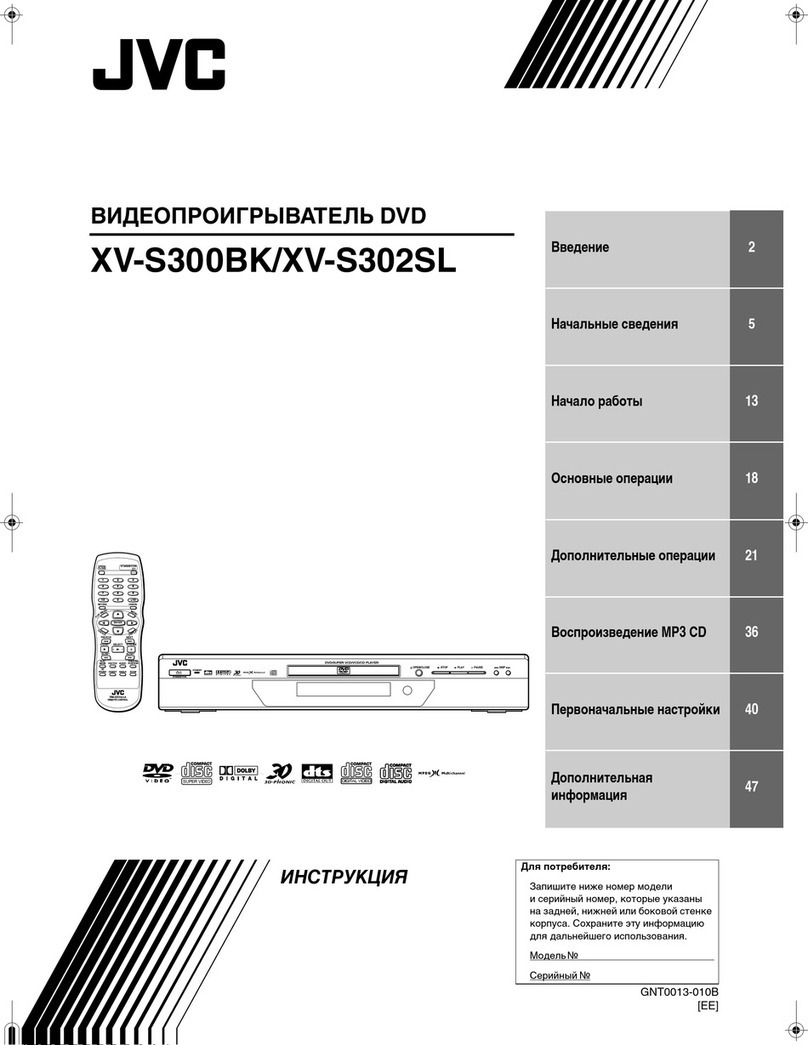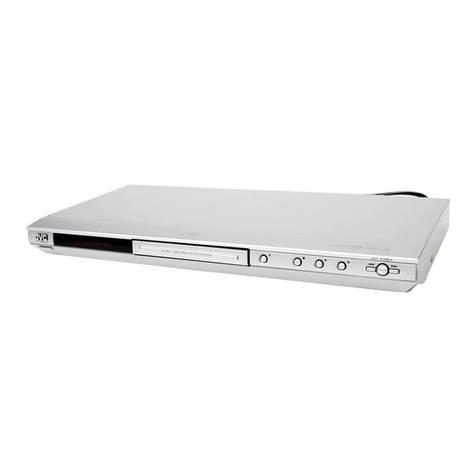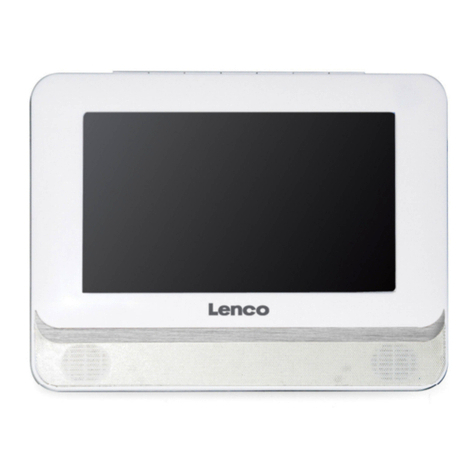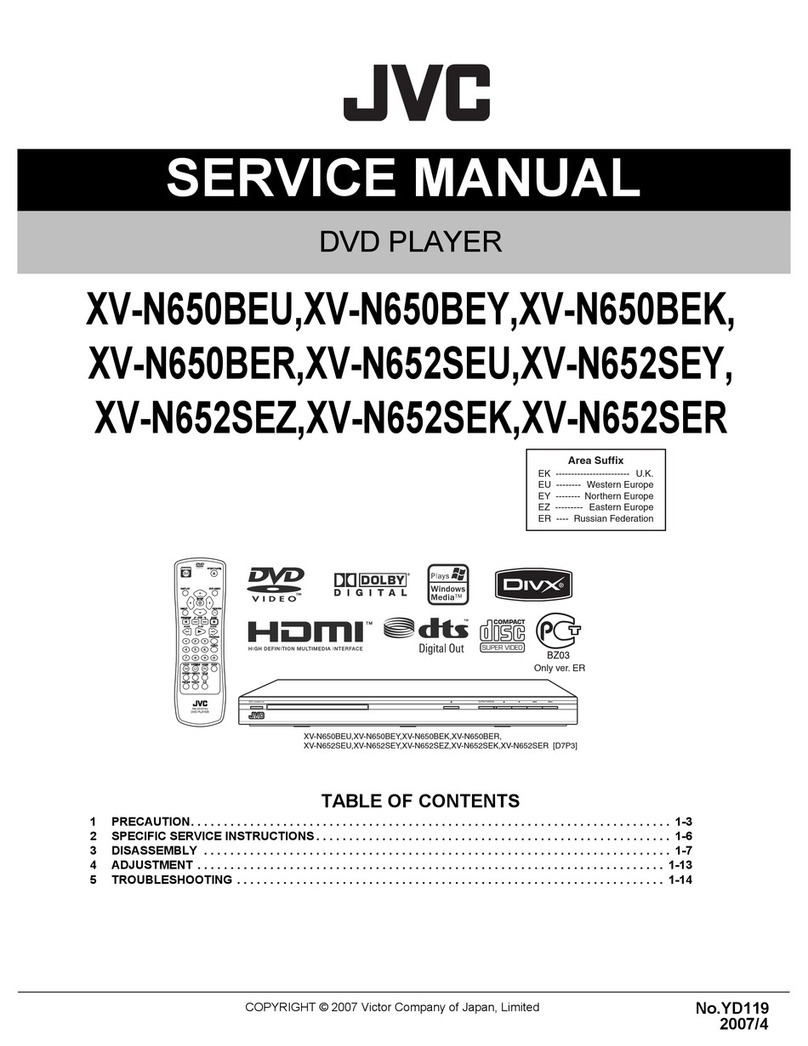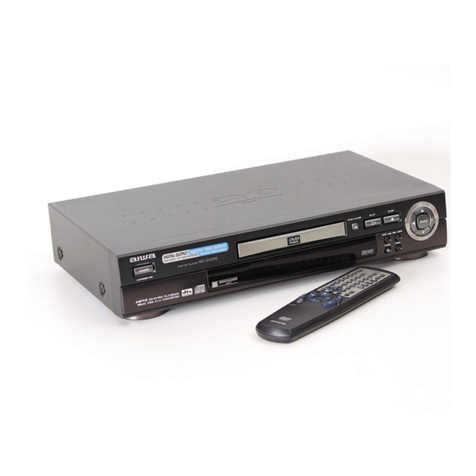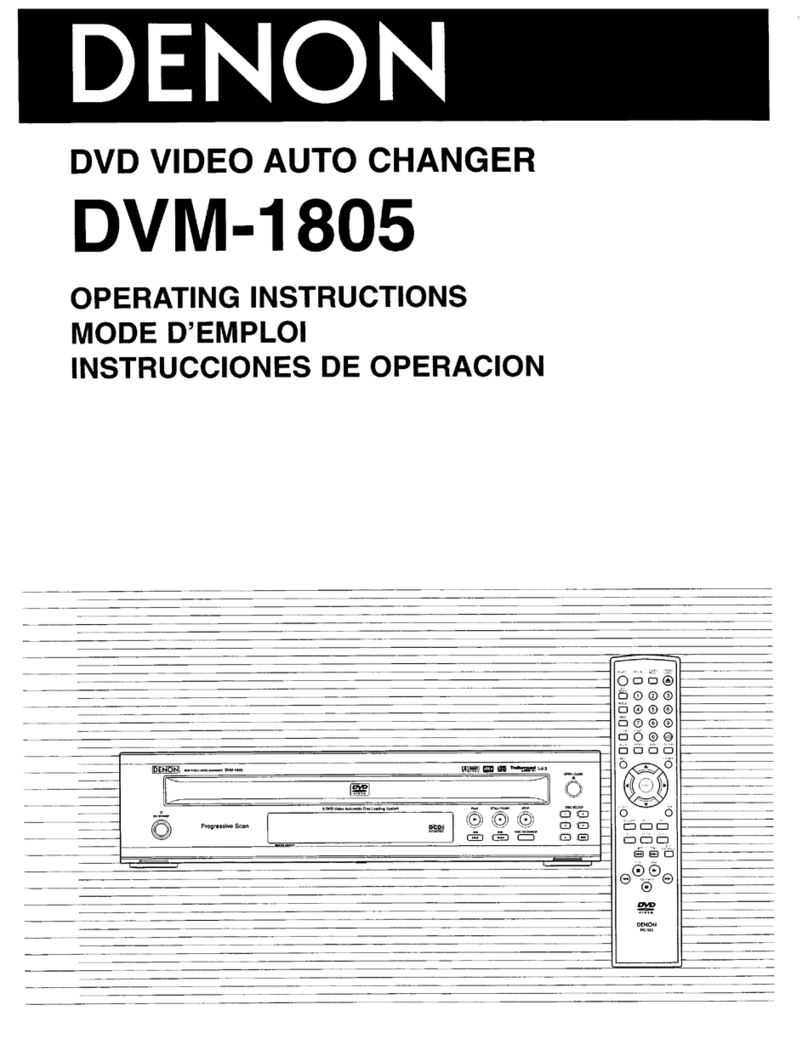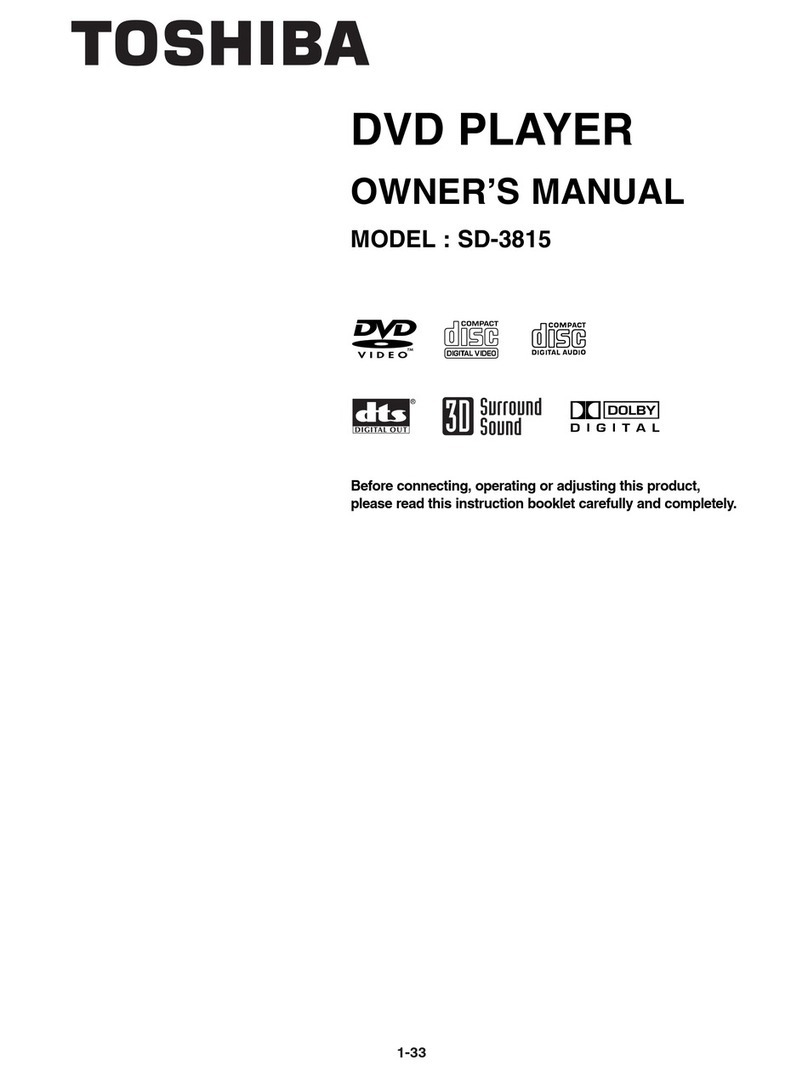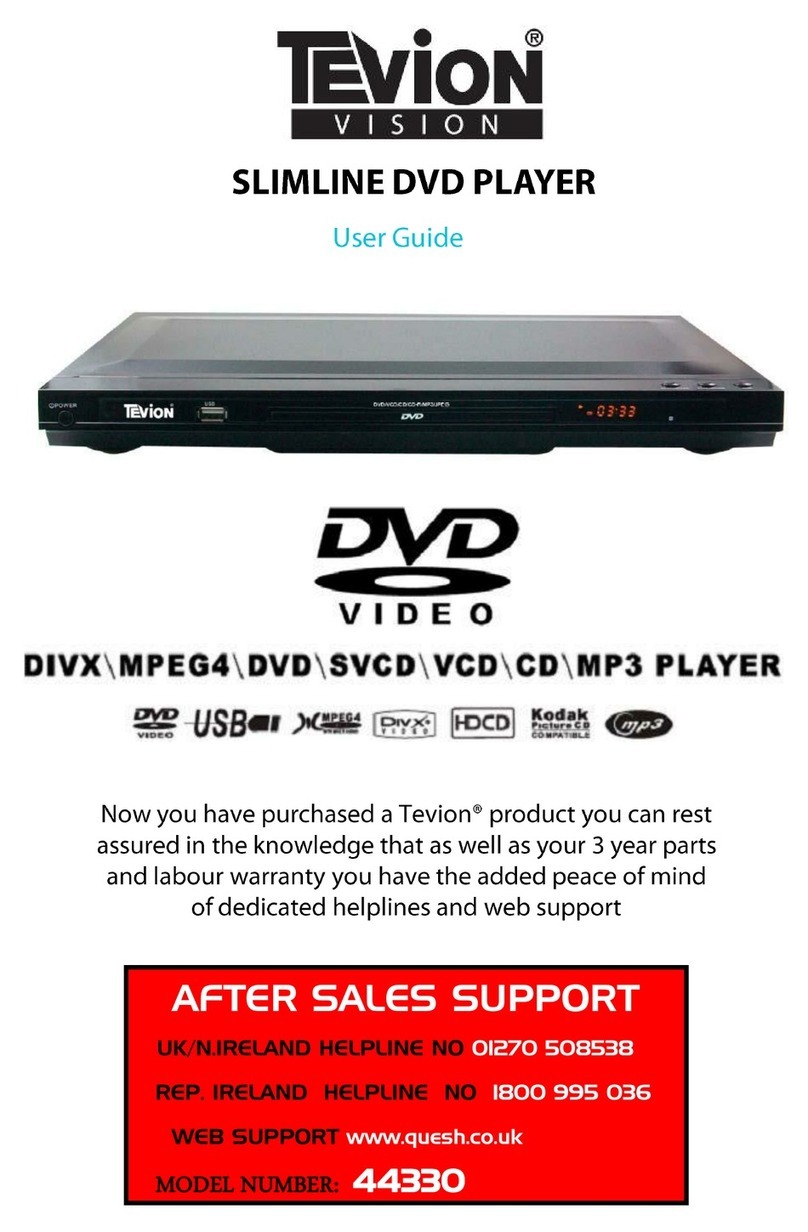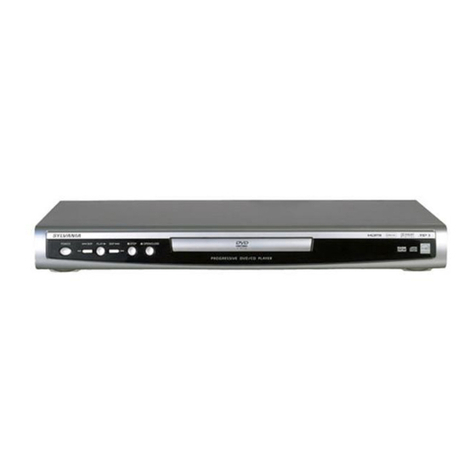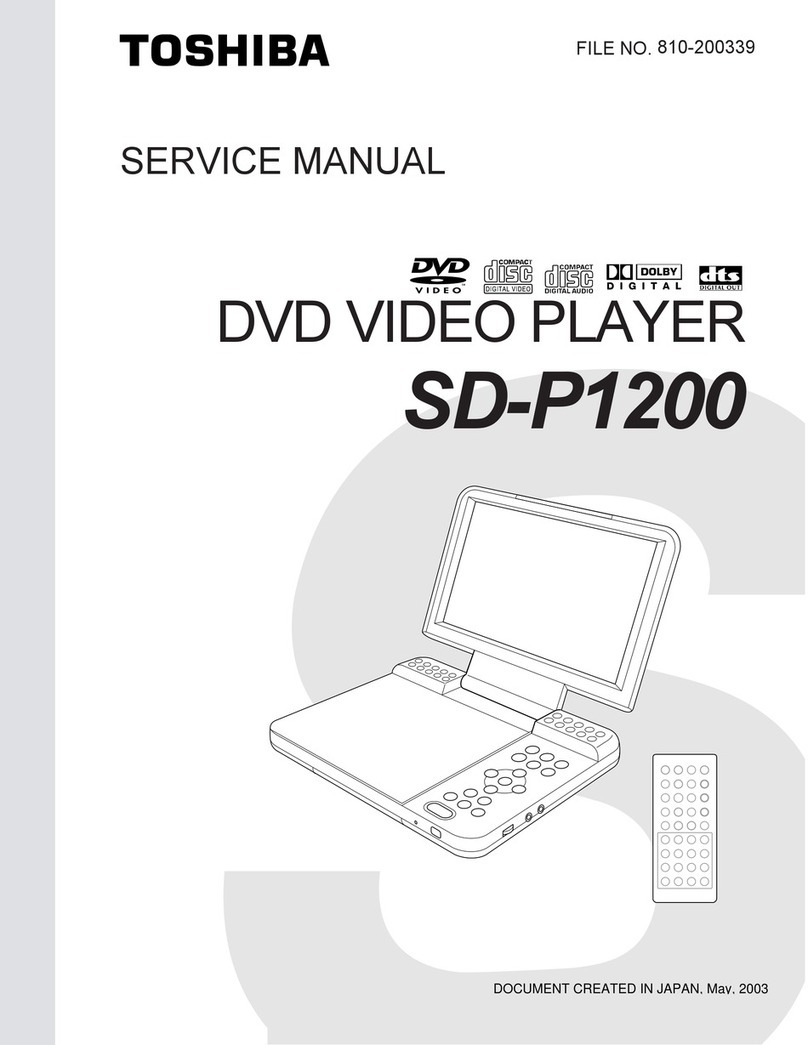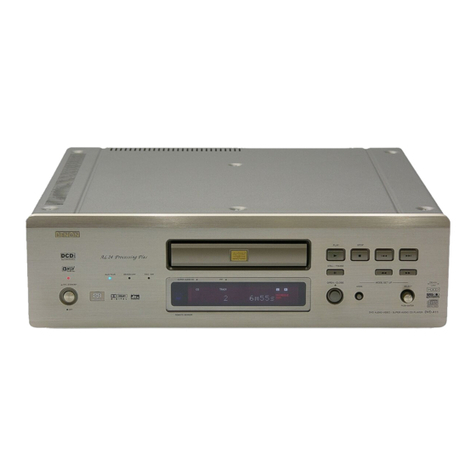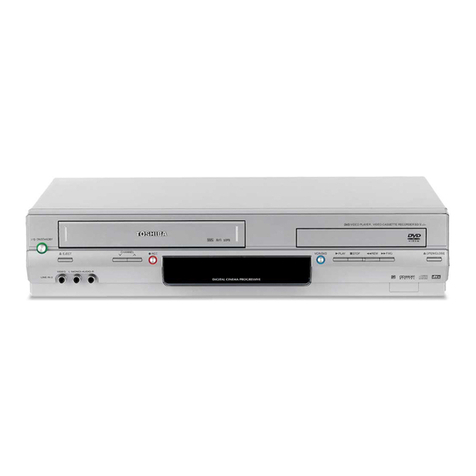
ES Series DVD-Video/CD/SA-CD Players; Version 3.0 Page 5
system instantly recognizes the characteristics and film and video and
automatically applies the correct processing for each.
•Film and interlaced video-originated material in the same scene. The
Sony system performs beautifully even when film and video appear on-screen
at the same time, for example, when video-originated subtitles are
superimposed over a film-originated scene. Because the Sony system
analyzes each individual pixel, it can switch processing modes anywhere—
even in the middle of a field! In contrast, conventional systems need to wait
until the end of the field before switching between film and video modes.
•Interlaced video originated material. Shooting on conventional, interlaced
video means capturing a new field of 240 interlaced scanning lines every 1/60
second. When subjects are moving, there can be significant differences from
each field to the next. It's a far cry from film origination, where the subjects
move each 1/24 second. Combining two video-originated fields of 240
interlaced scanning lines into one frame of 480 progressive scanning lines is
no simple task. For this reason, Sony's Pixel-by-Pixel Active I/P conversion
applies special processing for video originated material.
An on-screen display enables you to adjust the threshold of film and
video detection for each individual disc. Sony ES Series DVD-video
players can even store your setting for use the next time you play that
title!
In addition, the DVD-Video players of Sony ES enable you to adjust the
threshold of film and video detection. So you can optimize the I/P conversion for
the specific DVD you're watching. You get I/P conversion that's not only
amazingly smooth, but also exquisitely tuned to the individual needs of each
DVD. When you're done watching, the players can store the setting in memory.
So each time you play that title, you'll automatically get just the right conversion!
Three I/P conversion modes for
interlaced video origination (all models)
Many of today's DVDs feature concert videos, documentaries, current
events, sports, nature footage and other subjects originally captured on
conventional, interlaced video. Video based I/P conversion creates new pixels
from existing information. For example, to enable progressive scan output of an
odd video field, the player must create the pixels that compose all the even


